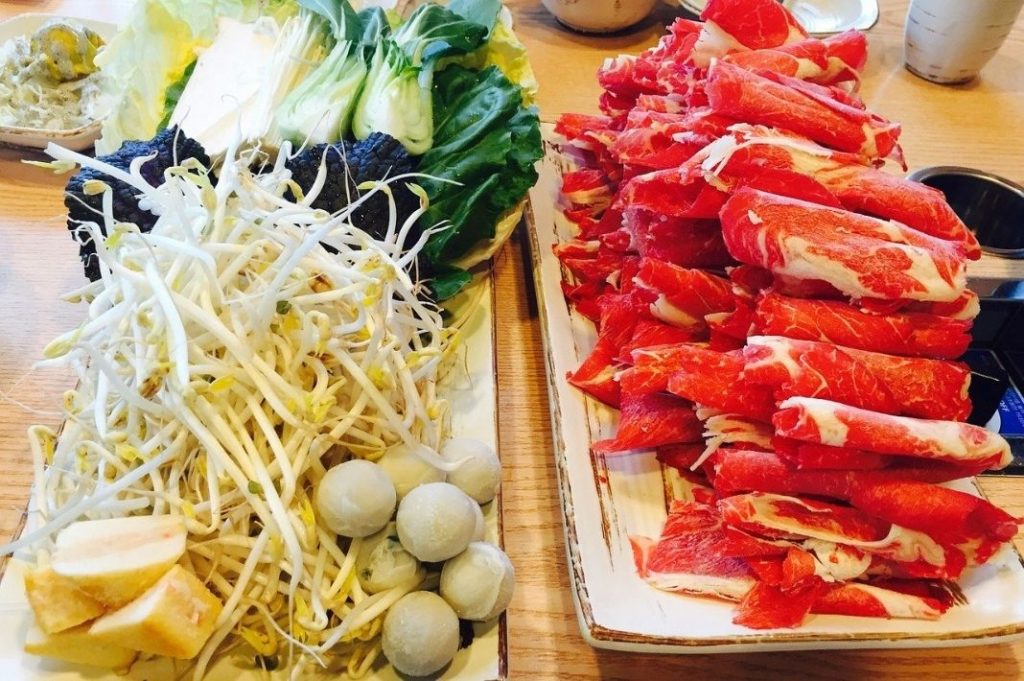Many types of nabemono 鍋物 or hot pot dishes exist as part of Japanese cuisine and nabe is one of the most pleasant ways to eat with a group of friends or family. The ingredients can be as unrestrictive as yosenabe, a hot pot where literally anything goes, or a dish with some etiquette involved like shabu shabu. Many dishes have a long history, like sukiyaki, dating back to the nineteenth-century or chankonabe that has traditionally been eaten by sumo wrestlers. Get to know the different types of Japanese hot pot and the correct way to eat them.

The History of Japanese Hot Pot
Hot pot cooking originated hundreds of years ago as homes would traditionally have a single hearth, a sunken fireplace called an irori, where the family would gather, eat, and stay warm. The food, typically fish and vegetables, was cooked in earthenware pots on the fire and paved the way for the many nabe pots and Japanese hot pot styles that exist today.
Popular Japanese Hot Pot Dishes and How to Eat Them
Sukiyaki
Considered the original Japanese hot pot dish, spreading in popularity during the late nineteenth-century, sukiyaki combines thinly sliced beef with an array of vegetables and shirataki noodles in a shallow pan with simmering broth. The meat in sukiyaki should be fully cooked prior to eating either through the boiling process or by grilling it prior to being placed in the hot pot which is typical of the Kansai region.
This sets it apart from other Japanese hot pot variants such as shabu shabu as well as the dipping process once you remove it from the pot with the large chopsticks. The beef is dipped into a soy blend sauce and a raw egg for a rich, sweet flavour before eating. Make sure to combine your leftover sukiyaki with udon or rice for a delicious finishing dish.
Shabu Shabu
Shabu shabu originated in Osaka during the mid-twentieth century and is thought to be originally inspired by Chinese hot pot cuisine. Shabu shabu is served in a pot that is designed to heat up quickly as you cook your beef yourself in the broth which is the main difference to sukiyaki. The swishing sound of the meat in the broth gives us the onomatopoeia ‘shabu-shabu.’
The first thing you should do is turn on the burner to get your broth simmering (not boiling). Your beef will be served on a plate next to you and you add to the hot pot with chopsticks and remove it when it changes colour.
Before eating make sure to dip the meat in the sauce provided which will usually be a sesame or soy-based sauce, or citrusy ponzu. Similar vegetables to sukiyaki like mushroom, cabbage, and cabbage are also left to simmer in the pot. You can also add tofu and yuba to the pot but they are quick to cook whereas your vegetables can be left to simmer until you’re ready. While beef is traditional you can also find seafood, vegetable, and chicken variations of shabu shabu.
Other Types of Nabe
Kimchinabe
Popular in the winter for its spicy, warming properties, kimchinabe is similar to the Korean dish kimchi jjigae. It features similar ingredients like tofu, pork belly, beansprouts, and, of course, plenty of kimchi. Simple to eat, the boiling pot is served at the table and is usually eaten with rice.
Ishikarinabe
A wonderfully simple yet delicious nabe, this is local to Hokkaido and combines salmon and vegetables with a creamy miso and kelp broth. Salmon fishing was common in the Ishikari area since the Edo period and became a common and rewarding dish after a good day’s catch.
Motsunabe
This meaty dish originated in Fukuoka and is enjoyed across Japan and simmers beef or pork tripe and other innards which are prepared before going into the pot for maximum flavour. The motsu are then combined with miso or soy broth and lashings of garlic and chili with an iconic layer of chives on top.
Tips for Eating Japanese Hot Pot
- One of the main things to remember with any hotpot is to not let the beef or chosen meat cook for too long so it doesn’t become tough. Keep the hot pot to a low simmer at the table to avoid the same problem.
- A general rule while eating shared meals, make sure to use the serving chopsticks for serving only and don’t mix utensils.
- Set aside time for a nabe meal, it’s not the kind of meal you want to (or can) rush.
- If you’re making Japanese hot pot at home, be careful not to use plastic utensils.
Post by Japan Journeys.